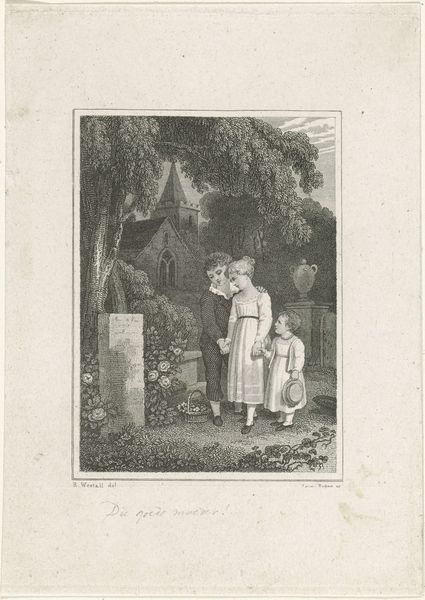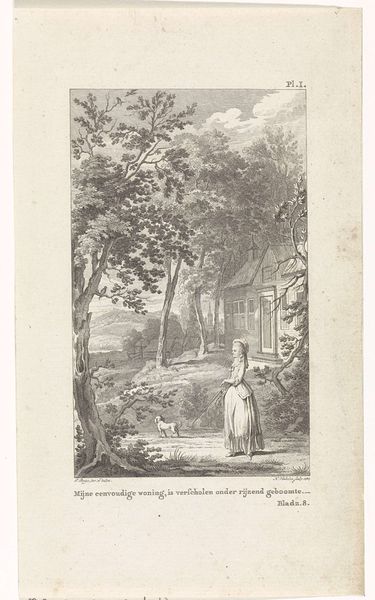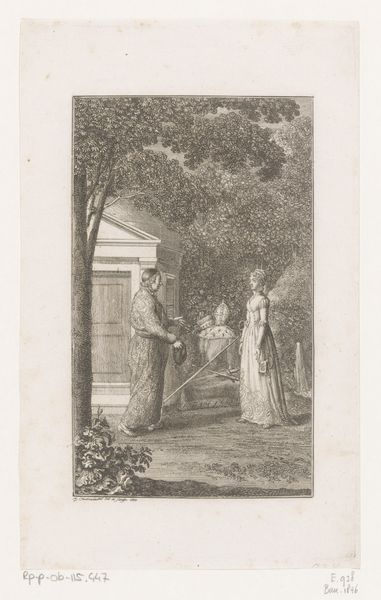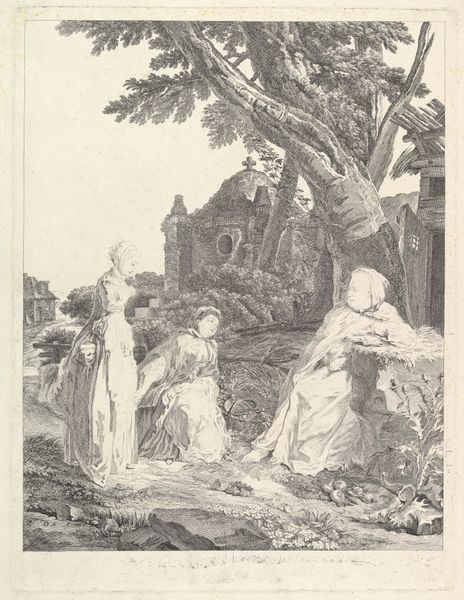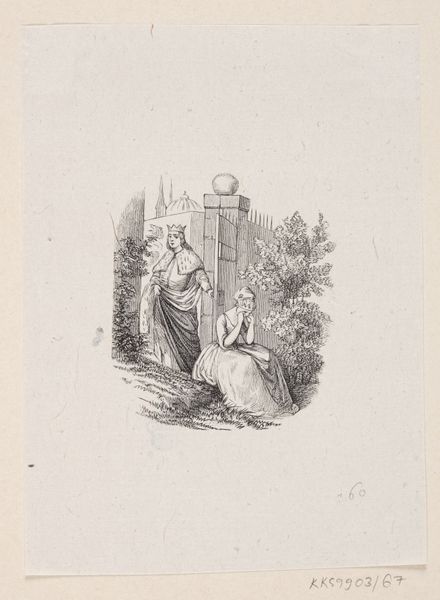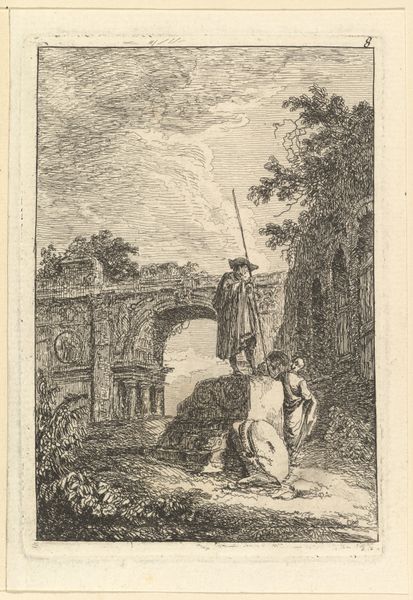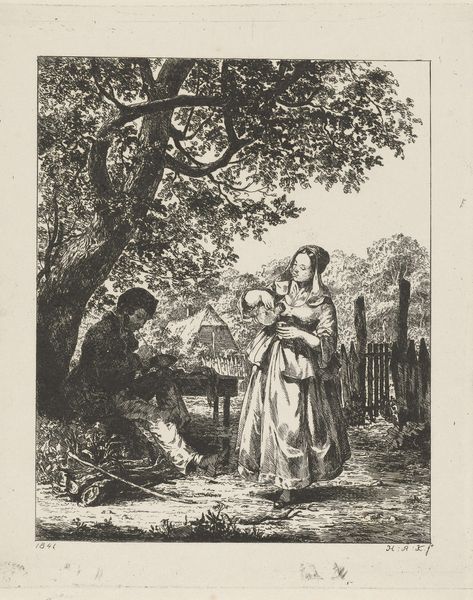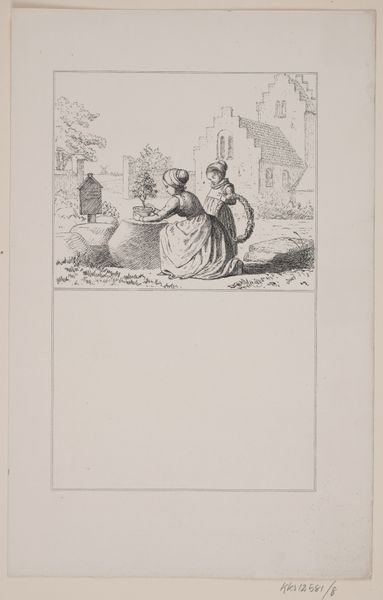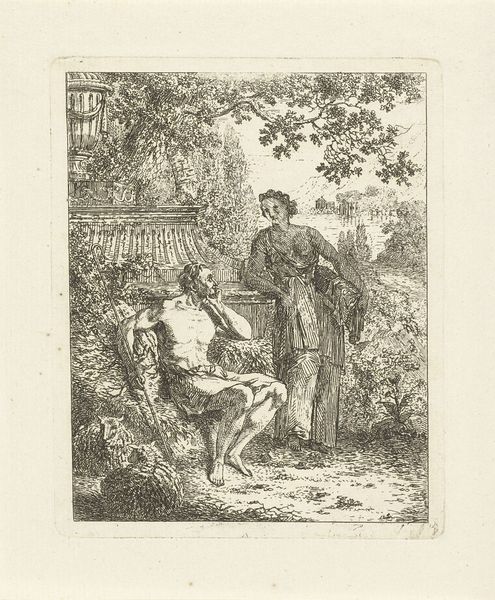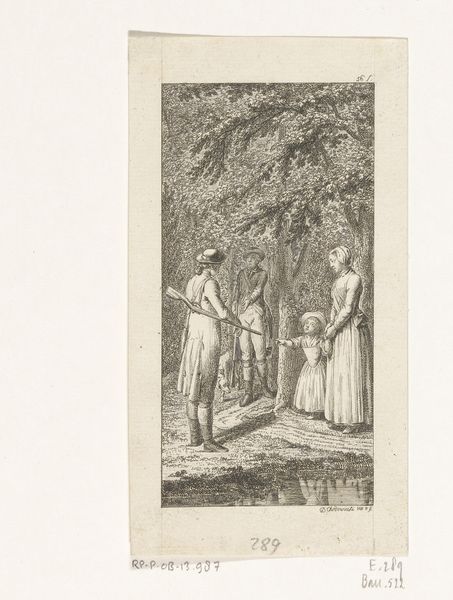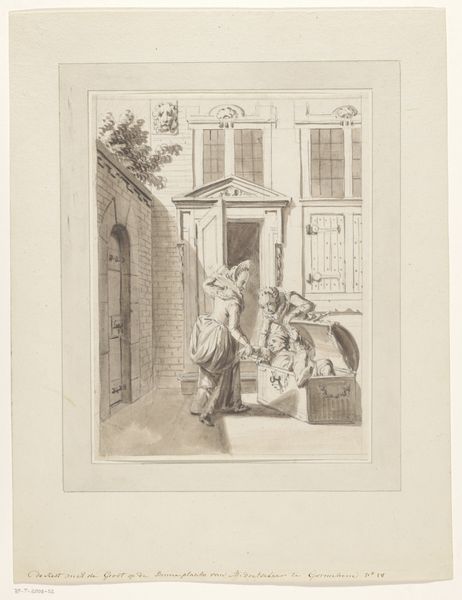
drawing, print, etching, pencil, engraving
#
drawing
#
dutch-golden-age
# print
#
etching
#
landscape
#
figuration
#
pencil
#
15_18th-century
#
genre-painting
#
engraving
#
realism
Dimensions: height 172 mm, width 157 mm
Copyright: Rijks Museum: Open Domain
Editor: So, here we have Marie Lambertine Coclers' etching, "Two Women and a Man in front of a Farmhouse," dating roughly between 1776 and 1815. There’s a real sense of everyday life, very grounded and rural. What catches your eye in this print? Curator: Well, immediately, I'm struck by the way Coclers uses a relatively simple scene to communicate a sense of the social fabric of the time. Notice how the figures are positioned – the women engaged in what seems like private conversation, while the man is set apart, observing. It reflects the established gender roles and social dynamics common during that era. Do you see any other details reinforcing this context? Editor: Yes, the clothing is pretty indicative of their social standing. Practical and simple. I wonder about the expressions, or lack thereof... is she making a comment on these roles? Curator: That's a compelling question. It's difficult to definitively say what Coclers intended, but the neutrality might suggest a commentary on the constrained lives, particularly for women, within this rural Dutch setting. Consider the influence of the Enlightenment ideals during this period, circulating even within rural communities, potentially sparking subtle questioning of social norms, visible in the way women occupies and share space. Editor: I never would have considered that. Curator: Art is rarely created in a vacuum. Understanding the political and social climate enhances our reading of what might otherwise seem like a simple genre scene. These seemingly mundane depictions can often carry silent social critiques. Editor: So, by looking beyond the immediate subject, we get a far more enriched sense of the artist's intention, as well as her time! Curator: Precisely. Thinking about who had access to this imagery at the time, the social function of genre painting, and how gender was portrayed gives us a far more profound reading.
Comments
No comments
Be the first to comment and join the conversation on the ultimate creative platform.
